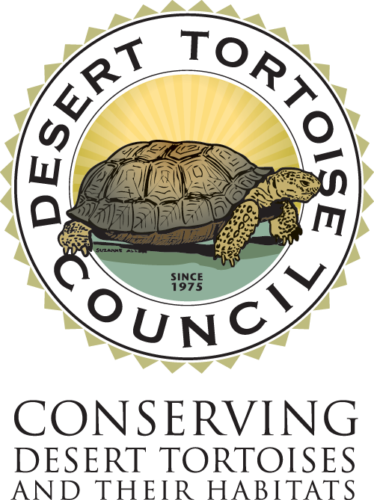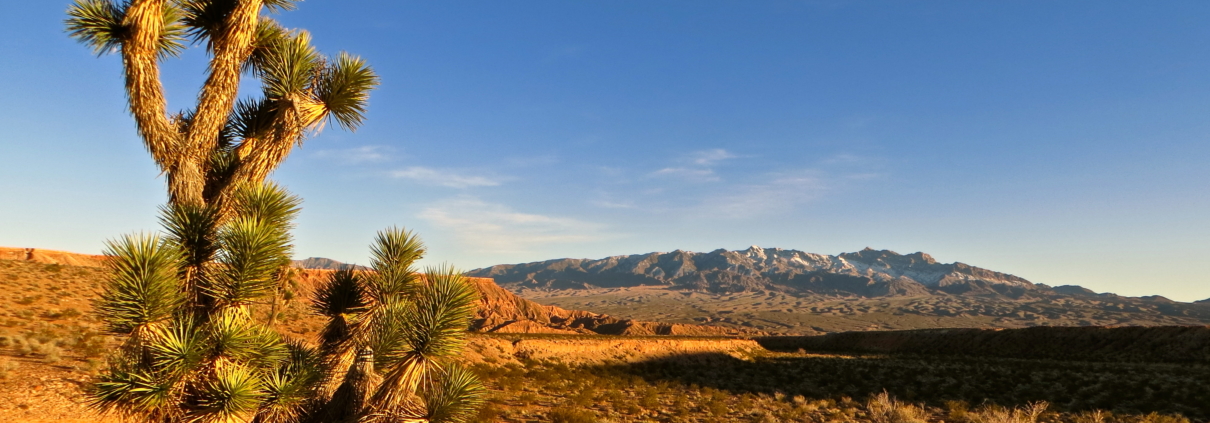Best Student Paper
Award Criteria
The Desert Tortoise Council Awards Committee presents the Best Student Paper Award at the close of each Annual Symposium. A presenter must give notice to the Program Chair of his/her student status at the time the Abstract is received. The Best Student Paper Award notice will accompany the call for papers. To qualify as a student, the person must be enrolled at a recognized college or university. Student status must be affirmed by a note from the student’s major professor or advisor and must accompany the Abstract.
The award is based on the following factors:
- Value of content furthering knowledge of desert tortoise biology, ecology, conservation and/or recovery
- Quality of content, including experimental design, organization and objectives
- Quality of oral presentation
- Quality of visual presentation
A minimum of three people, including the Student Award Chairperson, with a broad knowledge of desert tortoise biology and literature, will evaluate all student presentations. The Chairperson, with the assistance of the other evaluators, will decide upon the winner and will make the award.
Award Recipients
2024
1st Place: Sean Sutor
Vegetation cover, topography, and low-traffic roads influence habitat use and movement of Sonoran desert tortoises.
2nd Place: Adrian C. Slade
Effects of fixed and tracking monofacial photovoltaic solar arrays on the operative temperatures available to a 4 kg Mojave desert tortoise.
2023
1st Place: Julia Joos
Comparative thermal ecology and activity patterns of three species of Gopherus tortoises
2nd Place: Justice Best
Applications of near remote sensing imagery obtained with unmanned aerial vehicles on evaluating desert tortoise densities at local scales.
2022 (tie)
Steven J. Hromada
Movement of Mojave desert tortoises is altered by landscape and small-scale disturbances
M. A. Walden
Innate testosterone identifies sex of hatchling Mojave desert tortoises (Gopherus agassizii)
2021
Joseph P. Orton
Comparative analysis of immune gene family evolution and sex-biased expression based on a de novo genome for the Sonoran desert tortoise, Gopherus morafkai
2020
Corey I. Mitchell
Using Spatial Information to Improve Methods for Estimating Density for the Desert Tortoise
2019
Kirsten E. Dutcher
Genes in Space: What Mojave Desert Tortoise Genetics Can Tell Us about Landscape Connectivity in the Ivanpah Valley
2018
Halle R. Kohn
The Desert’s Canary: A Narrative Examination of the Socio-Political Role of the Threatened Desert Tortoise.
2016
Christina M. Aiello
Upper Respiratory Disease Dynamics: Insights from Transmission Studies
2015
Chava Weitzman
Passengers in a Tortoise Nose
2013
Andy Bridges
Juvenile Sonoran Desert Tortoise (Gopherus morafkai) Habitat Selection at a Long-term Study Site in Central Arizona, USA
2012 (3-way tie)
Taylor Edwards
Using Population Assignment Testing to Assess Local Genetic Affinity for Captive Desert Tortoises in California and Nevada; Sorting Out the Complex Evolutionary History of Morafka’s Desert Tortoise
Emily Thorn
Democracy, Capitalism, and Bureaucracy in the Mojave: a Sociological Perspective on Renewable Energy and Sensitive Habitat Management in the Mojave Desert
Rosalinda Palomo Ramos
Foraging Ecology and Nutritional Requirements of the Bolson Tortoise in South-central New Mexico
2011
Taylor Edwards
Looking Backwards In Order To Move Forward; A Review of Desert Tortoise Genetic Research
2010
Christina Davy
Potential Conservation Benefits of Multiple Paternities in the Threatened Desert Tortoise, Gopherus agassizii
2009 (tie)
Scott Hillard
Desert Tortoise Juvenile Hatchery Program at Edwards AFB: an Overview and Update on Program Success
Will Selman
Evaluating the Impacts of Human Disturbance on Endangered Chelonians, with Focus on the Yellow-blotched Sawback (Graptemys flavimaculata) of the Pascagoula River System, MS, USA
2008
Ian Murray: A Tale of Two Species: Extirpation, Range Expansion and Evolution in an Extreme Environment During the Late Quaternary
2007 (tie)
Erin Zylstra
Comparing Strategies for Monitoring Sonoran Desert Tortoises
Jon R. Davis
Dealing with Drought in the Sonoran Desert: The Gila Monster’s Perspective
2006
Erin Zylstra
Monitoring Strategies for the Sonoran Desert Tortoise
2005
Bridgette E. Haggarty
Preserving the Diversity of the Desert Tortoise ( Gopherus agassizii ): Reassessing Conservation Units
2004
Kenneth E. Nussear
Can Modeling of Tortoise Activity Be Used to Improve Species Monitoring?
2003
Taylor Edwards
Analysis of Gene Flow Among Sonoran Tortoise Populations Using Molecular Techniques and Radiotelemetry
2002
Taylor Edwards
Phylogeographic Patterns in Mojave and Sonoran Populations of the Desert Tortoise
2001 (tie)
Curtis Bjurlin
Predation and Survival During Early Life Stages of the Desert Tortoise in the South-Central Mojave Desert
Lisa Domico
Desert Tortoises as Sentinels of Environmental Toxicants
2000
Danielle Shemanski
Digestible Energy in Foods of Juvenile Desert Tortoises
1999
Kim Field
Desert Tortoise Translocation: The effects of pre-release water availability
1998
Peter Holm
Age Class Structure of a Desert Tortoise ( Gopherus agassizii ) Population in the Tucson Mountains of Saguaro National Park
1997
Matt Brooks
Relationships Between Habitat Factors and the Dominance of Alien Annual Plants at the Desert Tortoise Research Natural Area I. Soil Measurements and II. Annual Plant Biomass Measurements

